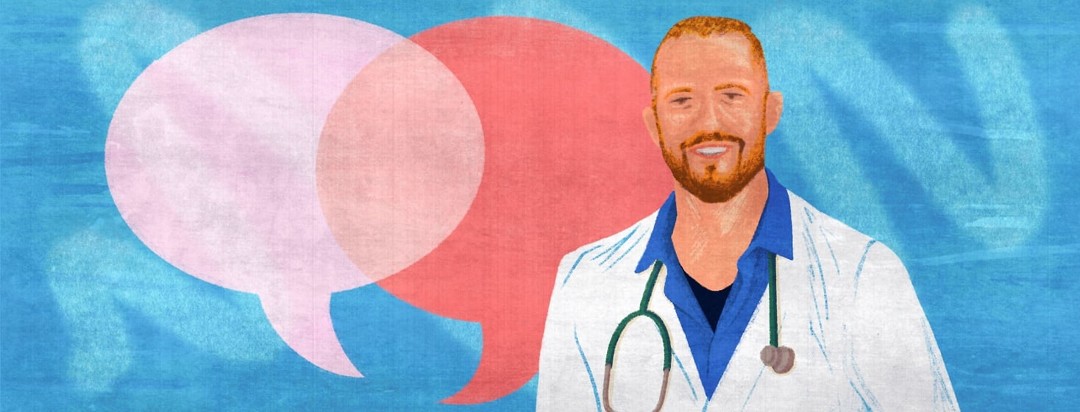Interview With Dr. Jeff O'Boyle About Direct-to-Patient Healthcare
As someone who has dedicated a large portion of energy into pursuing solutions for people with chronic illness, including type 2 diabetes, learning about the 'direct to patient' healthcare model was like finding a golden needle in the haystack. It is my sincerest pleasure to share my experience interviewing, Dr. Jeff O’Boyle. This meeting inspired me to look at medicine and our healthcare industry in a new shining light. In an industry that is frequently shadowed by expensive medications and expedited visits, direct to patient care is lighting the future of health care for many people.
Dr. Jeff O’Boyle and direct to patient healthcare
He was my introduction into the world of direct to patient healthcare, more importantly, he is a direct to patient-physician with outstanding insight and objectives. In 2009, he was in med school, without insurance; experiencing the fatal flaw of our healthcare system from the doorway between patient and provider. There was a clear need for alternative systems, but no clear solution, at the time.
It wasn’t until he was a practicing physician that he realized there are more flaws than just cost and access of healthcare; the quality has also fallen down the drain with an average of just 8 minutes spent with a doctor, per-visit. He noticed that the decline in private practice has lead to the decline of personalized-quality healthcare. So, he decided to leave his position with the healthcare network to start, Beyond Primary Care, his direct to patient health office.
What is direct to patient healthcare?
It’s healthcare without insurance. A doctor operating directly with a patient, resulting in transparency for the patient. Patients are told the prices of everything upfront, similar to a menu at a restaurant. Meaning, before you receive care, you know exactly how much you will pay, often less than a co-pay. How can that work? It’s simple, there’s no 'middle-man’ to be paid.
Without insurance, there's no money going to a third party. So, the patient pays less for the service, but the doctor actually makes roughly the same. However, the motivation for most direct to patient doctors is not money. Many, like Dr. O’Boyle, chose to be doctors to care for patients. However, because of quotas set by medical institutions, most doctors can only spend a short amount of time with each patient. The desire for a deeper connection with patients and higher quality healthcare is the primary motivation.
How does direct to patient healthcare work?
Like a subscription. As a patient, you pay a monthly price for an outlined care membership, provided by your own personal physician. During the interview, Dr. O’Boyle compared health insurance to car insurance; “...you don’t pay insurance for oil changes or maintenance on your car, you use it when you get in an accident.” Similarly, a subscription to an office like his, includes many 'maintenance services’ like stitches, skin biopsy, breathing treatments, illness tests, pregnancy tests, etc. The list goes on and what’s great is it goes on with transparent prices; everything I mentioned, and more, is included with the monthly subscription.
What about medications?
Since many direct to patient doctors operate as pharmacies as well, medication costs are small fractions of what they are through insurance. The best part though, is that you get to decide what medication you take and pay for, not your insurance. Your medication won’t change because insurance won’t cover it, it will only change if you and your doctor agree that it should. A solution to one of the most frustrating parts of dealing with insurance.
What's the catch with direct to patient healthcare?
The catch is that it's a localized service. Your direct to patient-doctor cannot cover you in other locations other than where you live, nor does it cover you in an emergency room visit. It’s best to think of it as your personal partner in health maintenance. That being said, there are direct to patient surgery centers, like the Surgical Center of Oklahoma, operating with the same transparency but for surgical procedures and fully financeable. Dr. O'Boyle suggested insurance to cover large-cost medical expenses, is still a good option for now.
How can you sign up for direct to patient healthcare?
To sign up with a direct to patient-doctor, Dr. O’Boyle directed me towards Direct to Patient Care Frontier. It's a database of all the direct to patient doctors, across the United States, with a map and information about each provider. It’s a great place to get started if you’re interested in an alternative way of healthcare.1
My predictions and hopes
In a healthcare system where insurance complicates the quality and access to care for many, direct to patient care is a plausible, alternative, solution. Since it bypasses the frustrations of insurance, it empowers both the doctor and the patient to be partners in healthcare. With transparent prices and a direct transaction, it's a great solution for artists, independent contractors, and other uninsured peoples. For a long time, we have seen the cracks in our healthcare system, this could be what fills in the gaps.

Join the conversation